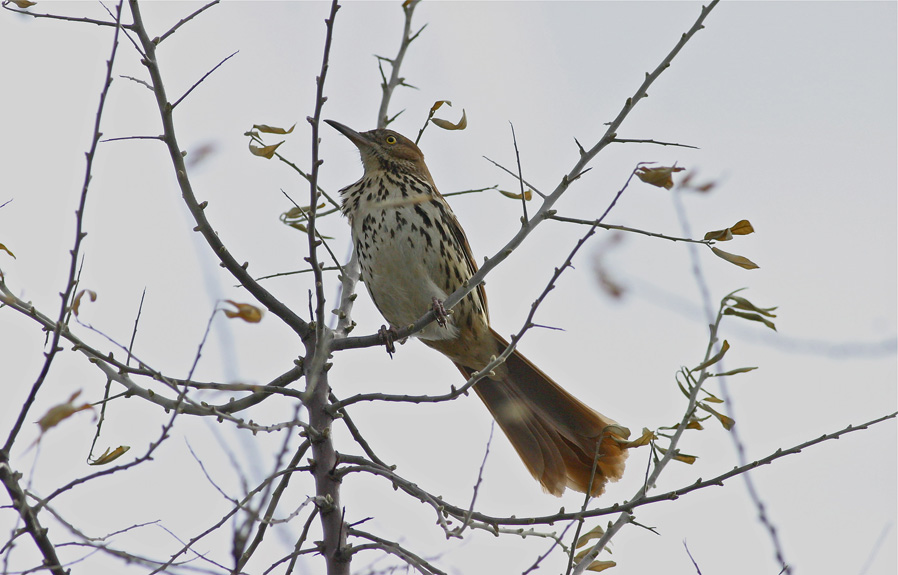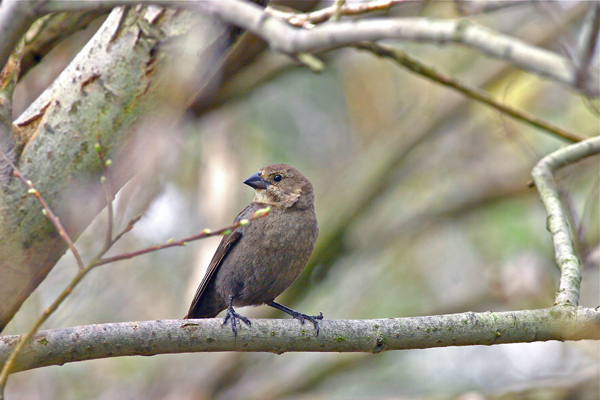

A magnificent brown thrasher makes his presence known at Ashbridge’s on Tues. April 6. © BCP 2010
Okay, relax everybody…It’s true I’m a novice birdwatcher, but even I know that the picture right above these words isn’t of an unknown LBB — it’s a streaked robin, a species infrequently seen in these parts and known to scientists as Turdus speculatus. No, I’m just being silly for no other reason than it’s raining out. The bird above is a beautiful brown thrasher, Toxostoma rufum.
I’ve only seen specimens of these gorgeous big birds a few times at Ashbridge’s Bay (more often in cottage country), but it’s always exciting when it happens.
Like so many times when out in the field, it was the song and call of this thrasher that got my attention before I ever saw him. I had never heard the song before, and went looking to see where this curious burbling series of notes was coming from. It wasn’t hard to find this bird — he was perched high up in an as-yet bare tree at the tip of the peninsula, singing his heart out.
Brown thrashers are in the Mimidae family, a group that includes catbirds and mockingbirds. They have huge song lists, and are able to mimic hosts of other songs. In fact, my Smithsonian Handbook of Birds of North America (Eastern Edition) states that brown thrashers are reported to have the largest song repertoire of any bird in North America, with more than 1,100 song types recorded. You can hear a minute-long sample recording here.
I don’t know whether thrashers stick around for the summer, as I’ve only ever seen them in the spring. My guess is that they stop in at our beach park for a few days to rest and feed before heading up north to cottage country. Perhaps someone with more knowledge than I can let me know.
My adorable unknown little brown bird. Can anyone help identify him/her? © BCP 2010
Speaking of people with more knowledge, I’m hoping that someone can help me identify my real LBB, to the left. I searched through every page of the aforementioned Smithsonian handbook, and couldn’t come up with a satisfactory match to my photo.
The closest picture I could find was of a female indigo bunting. The shape and colour of my little brown bird’s bill looked similar to the bunting’s in my book.
Can anyone help with the identification?
Thanks in advance.
Update:
Several kind people have quickly let me know that my little feathered friend just above is a female brown-headed cowbird. As Homer would say: “Doh!”
Thanks to the folks who let me know. Next time, I’ll know. Ain’t learning grand?
© BCP 2010



no comments